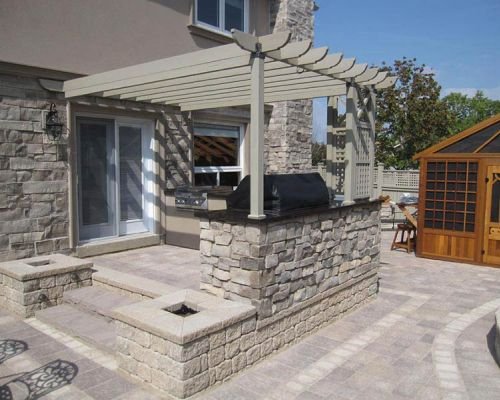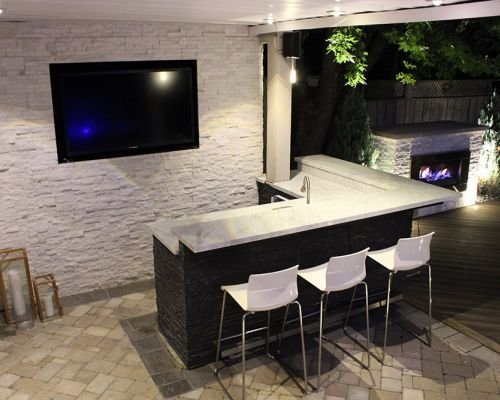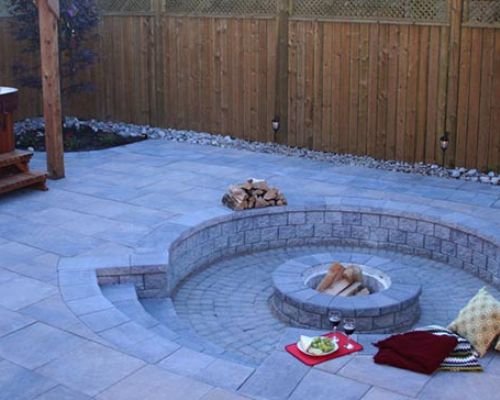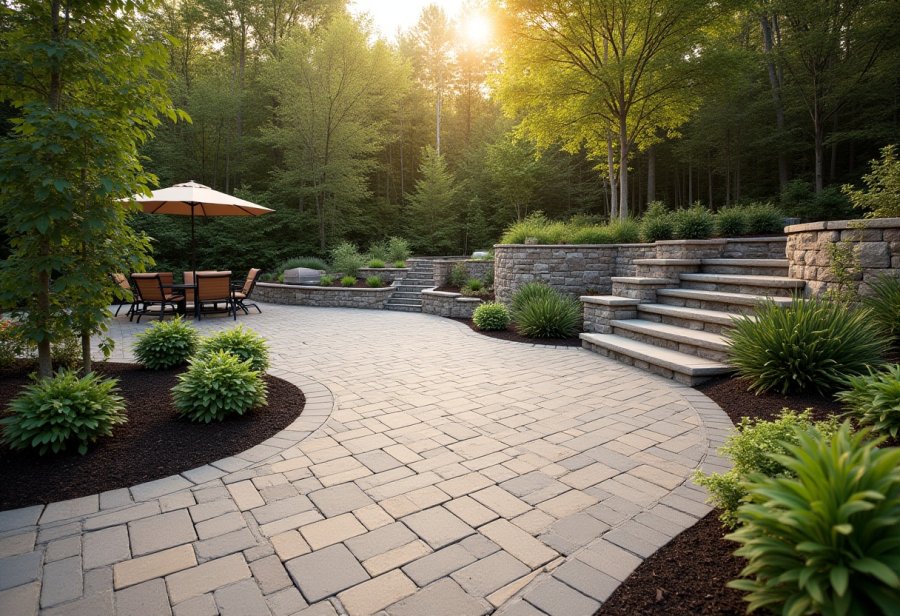Transforming Toronto yards into stunning outdoor retreats is more than just aesthetics—it’s about creating functional, sustainable sanctuaries that reflect personal style. How can homeowners balance beauty, eco-consciousness, and satisfaction in limited urban spaces? This guide explores the art of designing lush, low-maintenance landscapes that support local ecosystems through native plants, rain gardens, and renewable materials, all while reducing environmental impact. From meticulous planning and seamless installation to embracing innovative trends like smart technology, vertical gardens, and energy-efficient features, the journey from blueprint to thriving outdoor oasis is both collaborative and strategic. The question remains: how will future advancements shape our outdoor environments? As technology and sustainability converge, Toronto’s outdoor living spaces are poised to become smarter, greener, and more adaptable—offering homeowners a chance to reimagine their yards as personal retreats that blend style, purpose, and responsibility seamlessly.
Transform Your Outdoor Space with Toronto Landscape & Design
Looking to elevate your outdoor space in Toronto? Toronto Landscape & Design (TLD) offers expert backyard makeover services tailored to your needs. Our award-winning designers consider every detail, from natural stone features and water gardens to innovative irrigation systems and retaining walls, ensuring a stunning and functional landscape. Whether you’re dreaming of a peaceful retreat or a lively entertainment area, TLD is committed to transforming your yard into a beautiful sanctuary. Contact us today at 1.416.644.0499 or email mike@torontolandscapedesign.com to start your custom backyard makeover.

Transforming Toronto Yards into Personal Outdoor Sanctuaries
Transforming Toronto yards into inviting outdoor retreats has become a vital aspect of modern home improvement. As urban spaces shrink and lifestyles become busier, homeowners are increasingly viewing their outdoor areas as extensions of their living spaces—places to relax, entertain, and reconnect with nature without leaving home. A well-designed yard isn’t just about aesthetics; it’s about creating a functional, calming environment that reflects personal style while balancing beauty, practicality, and eco-consciousness.
Understanding what each homeowner truly wants from their outdoor space is the first step. Some envision lush gardens filled with native plants, while others prefer cozy fire pits or designated play zones for kids. Listening carefully to these preferences helps shape a design that feels personal and meaningful. Asking the right questions about lifestyle, aesthetic tastes, and maintenance expectations ensures the final result aligns perfectly with their vision. This collaborative approach transforms what might be a simple backyard into a sanctuary that feels uniquely theirs.
Design principles play a crucial role in making yards both beautiful and functional. Balancing hardscapes like patios with softer elements such as lawns and flower beds creates visual interest and usability. Proper scale and proportion prevent the space from feeling cluttered or empty, while focal points—like water features or striking plant arrangements—draw the eye and establish harmony. Sometimes, simplicity works best, with clear sightlines and uncluttered zones making the yard welcoming and easy to enjoy. When these elements come together, the result is an outdoor retreat that elevates the entire property and enhances everyday life.
Sustainability also guides many Toronto yard transformations. Selecting native plants suited to the local climate reduces water use, minimizes chemical dependencies, and supports local ecosystems by attracting pollinators like bees and butterflies. Incorporating eco-friendly features such as rain gardens and permeable paving helps manage stormwater naturally, preventing runoff and pollution. Using recycled or responsibly sourced materials for pathways and structures not only adds durability but aligns with environmental goals. These practices create landscapes that are as environmentally responsible as they are beautiful, turning outdoor spaces into true extensions of a homeowner’s commitment to sustainability.
Turning a landscape plan into reality requires careful coordination and open communication. Accurate measurements and detailed plans ensure that installation aligns with the original vision, reducing errors and delays. Using native plants and climate-aware features from the outset supports a sustainable, low-maintenance yard that’s easy to enjoy. Involving homeowners throughout the process fosters satisfaction and confidence, transforming the project from a contractor’s job into a collaborative creation. When everyone works together, the final outdoor space becomes a seamless blend of aesthetic appeal and functional excellence, making the yard a true outdoor retreat to be enjoyed for years to come.

Eco-Friendly Practices: Sustainable Choices for a Greener Yard
Eco-friendly practices in landscape design are essential for creating outdoor spaces that are both beautiful and sustainable. When transforming Toronto yards, selecting native plants is one of the most impactful steps. Native species are naturally adapted to the local climate, requiring less water, fewer fertilizers, and minimal pesticides. This approach supports local ecosystems by attracting pollinators like bees and butterflies, which are vital for maintaining biodiversity. Besides benefiting the environment, using native plants reduces ongoing maintenance costs and ensures the landscape remains resilient over time.
Stormwater management is another key component. Features like rain gardens and permeable paving allow water to be absorbed naturally into the ground, reducing runoff and preventing pollution from reaching nearby waterways. Rain gardens, planted with native vegetation, act as natural sponges, soaking up excess water and improving water quality. Permeable pavements enable rainwater to seep through the surface, lowering erosion and helping to keep the landscape healthy, especially during Toronto’s rainy seasons. These solutions not only make the yard more eco-friendly but also add visual interest and texture to the design.
Choosing organic fertilizers over chemical alternatives significantly enhances sustainability. Organic fertilizers enrich the soil naturally, promoting strong roots and healthy plant growth without harmful residues. By avoiding chemical pesticides and herbicides, homeowners protect beneficial insects and soil microbes that play crucial roles in maintaining a balanced ecosystem. Instead, integrated pest management techniques focus on natural deterrents or encouraging beneficial insects, creating a thriving environment where plants can flourish with minimal intervention and chemical input.
The materials used for pathways, decks, and structures also influence the yard’s environmental footprint. Recycled concrete, reclaimed wood, and responsibly sourced materials reduce resource extraction and waste. These options often offer greater durability and aesthetic flexibility, seamlessly blending with natural surroundings. Prioritizing eco-conscious materials not only supports broader sustainability goals but also results in outdoor spaces that stand the test of time, maintaining their beauty and functionality without constant replacement or repair.
Energy efficiency extends beyond the design itself. Solar-powered outdoor lighting and low-voltage systems are increasingly popular, cutting energy consumption and operational costs. Rainwater harvesting systems can irrigate gardens naturally, reducing dependence on municipal water supplies and lowering bills. These features enhance the outdoor experience while aligning with environmental principles, helping homeowners make smarter, greener choices. As technology advances, such eco-friendly solutions become more accessible and easier to maintain, making sustainable outdoor living a practical reality.
Designing with microclimates and natural features in mind ensures landscapes remain sustainable in the long run. Positioning plants and structures to maximize shade and wind protection reduces the need for supplemental watering, heating, or cooling. Mulching and natural buffers help retain soil moisture and regulate temperature, supporting plant health and reducing irrigation demands. These strategies promote a resilient yard that remains vibrant and low-maintenance, allowing homeowners to enjoy their outdoor retreats without constant effort or environmental guilt. Embracing these practices makes sustainability an integral part of outdoor living, enriching both the landscape and the homeowner’s peace of mind.
From Design to Reality: Bringing Your Landscape Vision to Life
Turning a landscape design from paper into a thriving outdoor space is where all the planning and creativity come together—and it’s essential for the project’s success. Clear communication between the design team and the installation crew is key. When everyone understands the vision, the details of the plan, and the specific requirements for each element, mistakes are minimized, and the work proceeds smoothly. Precise measurements, detailed instructions, and thorough coordination ensure that each step aligns perfectly with the original concept, reducing costly errors and delays.
Choosing native plants and climate-aware features early in the installation process supports a landscape’s sustainability from the outset. Native species are naturally suited to Toronto’s weather, making them easier to establish and more resilient over time. These plants require less water, fertilizers, and pesticides, which lowers maintenance and environmental impact. Incorporating them thoughtfully into the design means the yard becomes a low-maintenance, eco-friendly space that’s as beautiful as it is sustainable.
Throughout installation, maintaining close contact with the homeowner keeps expectations aligned and fosters trust. Regular updates and involving clients at key milestones create a collaborative atmosphere. When homeowners are engaged and informed, they can provide feedback and adjustments that elevate the final result. This partnership approach ensures the project feels personal and satisfying, transforming a standard landscaping job into a shared achievement.
Coordination among contractors is vital for a seamless transition from plan to reality. Experienced professionals understand the nuances of each phase—grading, planting, hardscape installation—and work efficiently to keep everything on schedule. Their expertise prevents surprises, ensures quality, and maintains a cohesive look once completed. When every team member pulls together, the yard takes shape as a unified, natural space rather than a collection of disconnected parts.
After the major elements are in place, a walkthrough with the homeowner is the final step before wrapping up. This walkabout offers a chance to see the yard in its near-final form, allowing for small tweaks that can make a big difference. Adjustments to plant placement, finishing touches, or minor design details help meet or exceed expectations. Addressing these fine points ensures the homeowner feels confident and excited about their new outdoor retreat.
Thoughtful plant selection during installation is critical for long-term success. Prioritizing native and climate-adapted species guarantees the landscape remains vibrant and resilient with minimal fuss. When these plants are integrated carefully, they support sustainability goals while creating a lush, inviting environment. Proper planting practices—such as correct spacing, soil preparation, and mulching—set the stage for healthy growth, making the yard easier to maintain over time.
The final phase involves ensuring the landscape’s durability and beauty are preserved for years to come. Proper aftercare, including watering, mulching, and seasonal adjustments, keeps plants healthy and the space looking its best. Educating homeowners on simple maintenance routines helps sustain the yard’s appeal, reducing the need for costly repairs or replacements later. With careful attention, the outdoor space remains a stunning, functional retreat that reflects the original vision.
Bringing a landscape plan to life is about more than just execution—it’s about creating a personal sanctuary. When every detail is carefully managed, from precise measurements to the right plant choices, the result is a seamless, vibrant outdoor space that feels both intentional and natural. This process transforms a blueprint into a living, breathing environment where beauty, sustainability, and client satisfaction are woven together. The payoff is a yard that not only elevates the home’s curb appeal but also becomes a cherished part of everyday life.
For those looking to further enhance their landscape and ensure long-term success, exploring professional resources can be invaluable. Hiring experienced landscape designers or consulting specialized services can help bring expert insights into your project. You might consider checking out more about how to choose the right professionals by visiting landscape design services, which can guide you in making informed decisions and achieving your outdoor vision.

Future Trends: Innovative Ideas and Technologies Shaping Outdoor Retreats
The future of yard transformation in Toronto is set to be more innovative and eco-conscious than ever before. Smart technology integration is quickly becoming a game-changer, giving homeowners the ability to control lighting, irrigation, and security remotely. Imagine adjusting your garden’s watering schedule or dimming outdoor lights from your phone—these features add convenience while boosting energy efficiency. As automation tools become more affordable and intuitive, outdoor spaces will evolve into smarter environments that help residents reduce waste and lower utility costs without sacrificing style or comfort.
Eco-friendly materials and modular designs are gaining popularity, offering flexible solutions that adapt over time to changing needs. Today’s outdoor setups might include a small kitchen area that can be expanded later or a tranquil lounge replacing a play zone, all built with sustainable, recycled, or biodegradable materials. This modular approach not only extends the lifespan of outdoor features but also allows homeowners to reconfigure their yards easily, keeping the space fresh and relevant to their lifestyle. Such adaptability ensures that outdoor retreats remain functional and beautiful, even as preferences and circumstances evolve.
Vertical gardens and green walls are transforming tight urban yards into lush, vibrant retreats. These features maximize greenery in limited space, serving as striking focal points or privacy screens while supporting biodiversity by attracting birds, bees, and butterflies. Installing vertical plantings turns small yards into immersive green environments, making them feel much larger and more inviting. They also add texture and depth, creating a sense of abundance that combines visual appeal with environmental benefits. As cities grow denser, these innovative solutions will become essential tools for creating lush escapes in compact outdoor spaces.
Water and energy self-sufficiency are moving to the forefront of landscape design. Solar-powered lighting and water features reduce energy costs and carbon footprints, while rainwater harvesting systems allow yards to irrigate naturally, decreasing dependence on municipal resources. These technologies not only enhance the outdoor experience but also align with Toronto’s increasing focus on sustainability. As these solutions become more seamless and easier to maintain, they make eco-conscious outdoor living accessible to a broader range of homeowners, encouraging responsible stewardship of the environment without sacrificing aesthetic appeal.
Designs are shifting toward multi-functional outdoor zones that blend different activities into cohesive spaces. Instead of isolated areas for dining, lounging, and gardening, designers now create fluid environments that serve multiple purposes. For example, a single patio might feature a built-in fire pit, a small vegetable garden, and adjustable lighting to transition effortlessly from day to night. This approach maximizes limited space and promotes outdoor living as an integral part of daily life, especially in Toronto’s crowded urban landscape. Staying ahead of these trends requires ongoing learning, with professionals and homeowners alike turning to industry resources, social media, and innovation hubs to gather fresh ideas. Embracing these advancements ensures outdoor retreats remain stylish, sustainable, and adaptable, reflecting both technological progress and environmental responsibility.






